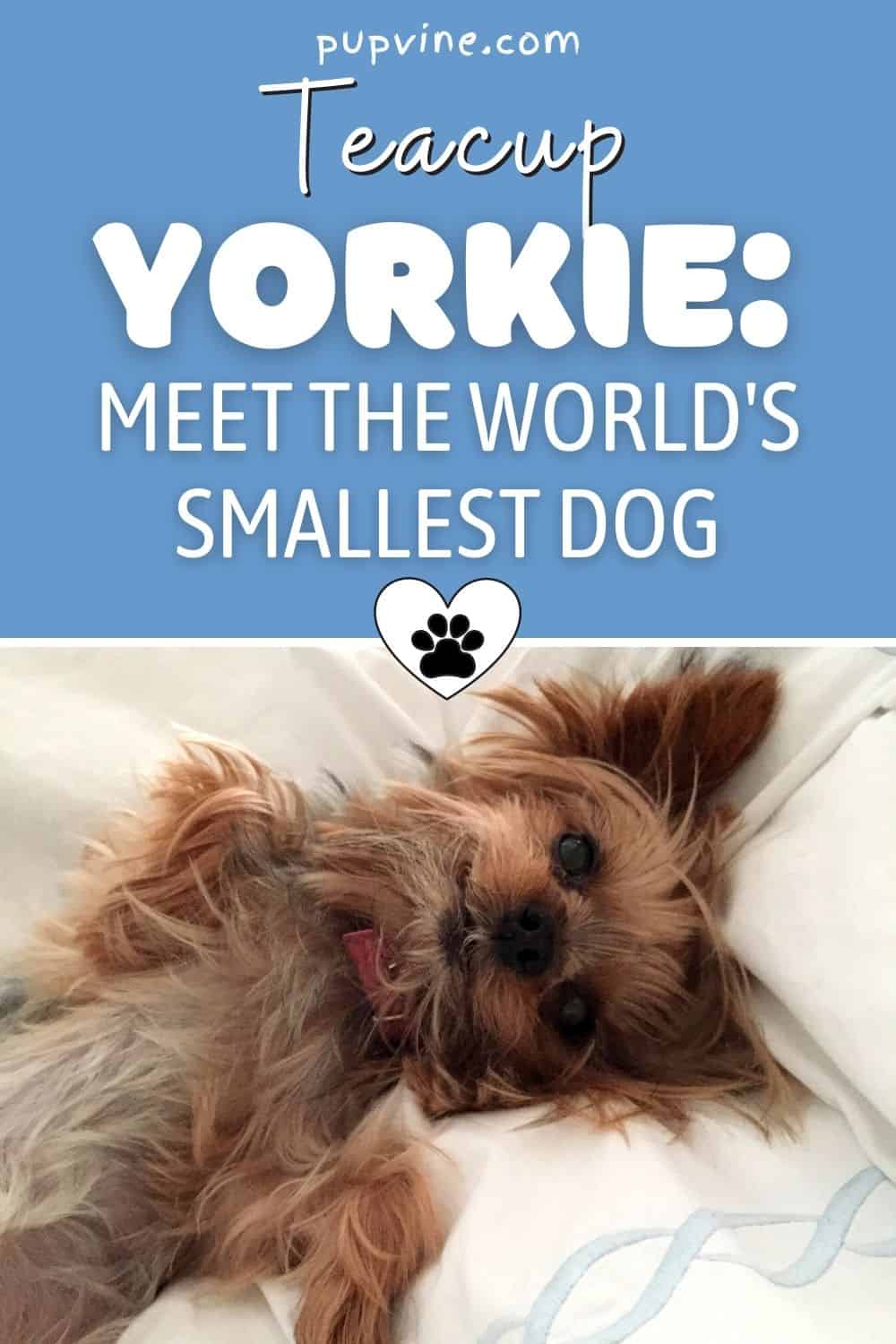No, those aren’t fake photos you saw online. Yorkies do actually fit into a teacup!
In fact, those are teacup Yorkies; a small relative of the regular Yorkies, designed to be a dog that will steal your everything.
In fact, they were designed to reduce the size and create the same intelligent pooch, but only smarter.
They’re smaller than our regular tiny dogs, such as the Chihuahua, the Maltese, or the Pomeranian.
The toy Yorkie was reduced in size, but the loving temperament is as big as it gets.
How well do you know this dog breed? Not at all?!
Quickly, let’s spill some tea on the teacup Yorkie!
The Origin Of The Breed And General Characteristics
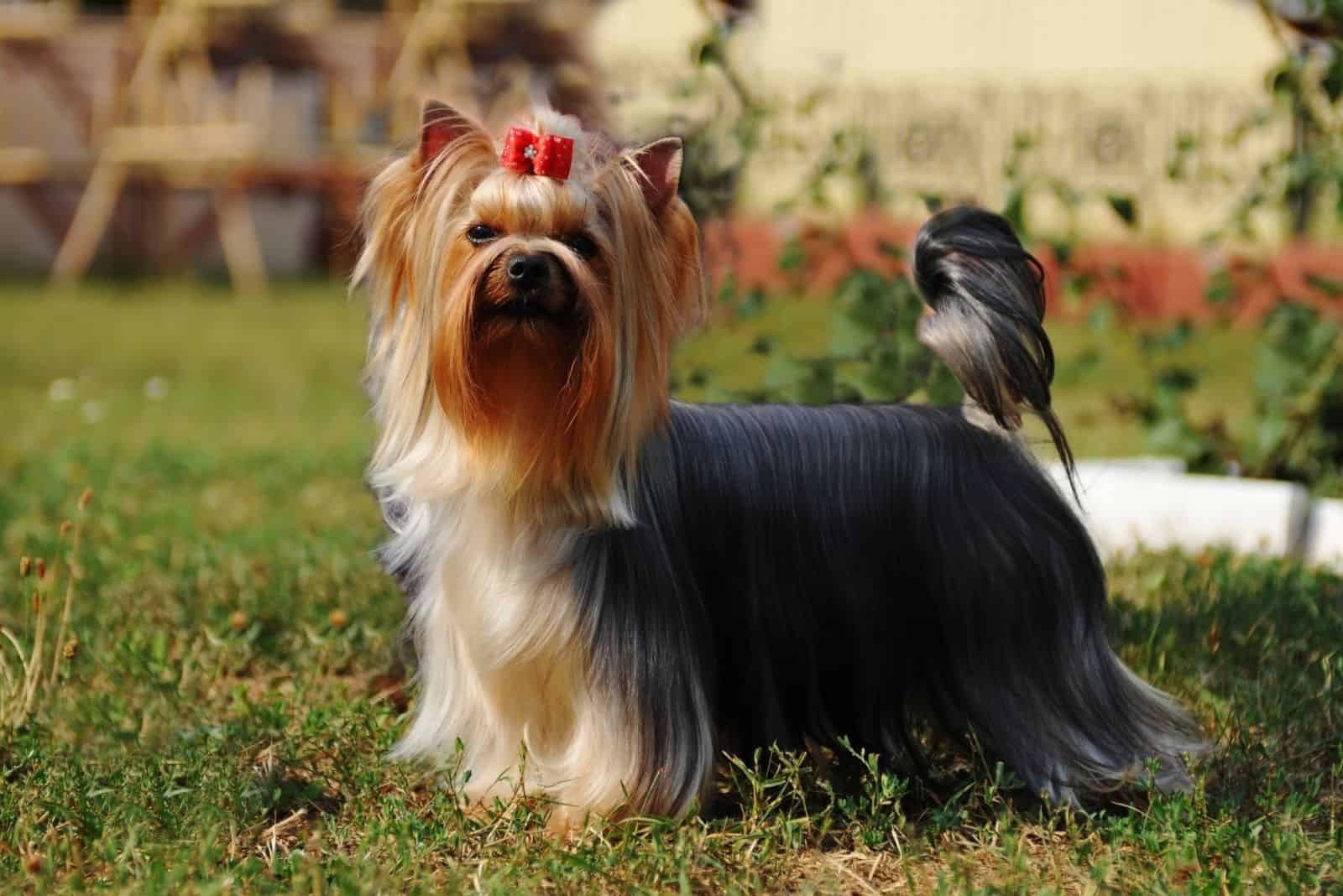
A teacup Yorkie is a Yorkshire Terrier, but only bred to reduce the size to a significantly smaller dog.
A Yorkshire Terrier is already a toy breed, but miniaturizing it produces a very small pup indeed.
We know they’re small, but we don’t know where these tiny pups come from. Let’s find that out by taking a quick trip back in time.
Alright, we don’t have to go that long. Back in the 1800s, the Industrial Revolution was skyrocketing in the UK.
Everything was submitted to huge changes, even the canine world.
Many mill workers and miners came from Scotland to England looking for a job. These workers brought along dogs, mostly Broken-Haired Scotch Terriers.
It is believed that no matter if they come from the Yorkshire region of England, the Yorkshire Terriers have ancestors made from many different Terrier types.
Unfortunately, we can’t know which Terriers played a role in making the Yorkie.
Dog breeders didn’t keep any records of breeding at that time, so we’ll never be sure what it took to make a Yorkshire Terrier.
However, if we take a look at the Yorkie’s appearance, we can notice that there are several dog breeds mixed up in the breeding process.
There were three Terriers that came from Scotland to England:
• Clydesdale
• Paisley
• Skye
Think of the era in which our Yorkie was first made… The Industrial Revolution.
Europe was still quarreling with basic hygiene, dirt and diseases were everywhere, and where there’s dirt, there are rats. And, how do you get rid of rats? You get a Ratter!

Photo from: @ohmydogkearny
The Ratter was a dog used to kill rats and other vermin that used to overpopulate major cities. Who are we kidding?
There were rats everywhere! Our buddy, Yorkie, used to be talked down in the mines and mills to help control the number of rats.
But, Yorkie did more than that!
Hunters saw how good Yorkshire Terriers were at chasing down small animals that live in burrows, so they carried them along to hunt for badgers, foxes, and other small creatures.
Common sense states that wild animals are extremely dangerous when cornered in their dens.
That’s why we can proudly say that the Yorkie was a brave and courageous dog to go hunting, and it did it with much success.
Still, their role as hunt dogs and watchdogs almost went extinct. The popularity of this purebred pup moved up and shifted to the homes of the first modern dog owners.
Royalty and the upper-class citizens of England became crazy about the Yorkies’ unique appearance and small size.
It was a time in which a small dog was bred for its small structure and convenience.
Huddersfield Ben was the most desirable stud dog back then. He weighed more than an average Yorkie, carrying 11 pounds of body mass.
His consistent litter production of Yorkshire Terrier puppies that were under five pounds is what made him so popular.
Huddersfield Ben is one of the founding fathers of this dog breed.
The Yorkie’s popularity in England began under the name, Broken-Haired Scotch Terrier, back in 1861.
But, by 1874, this breed got the name we all know today – the Yorkshire Terrier.
What Does A Yorkie Look Like?
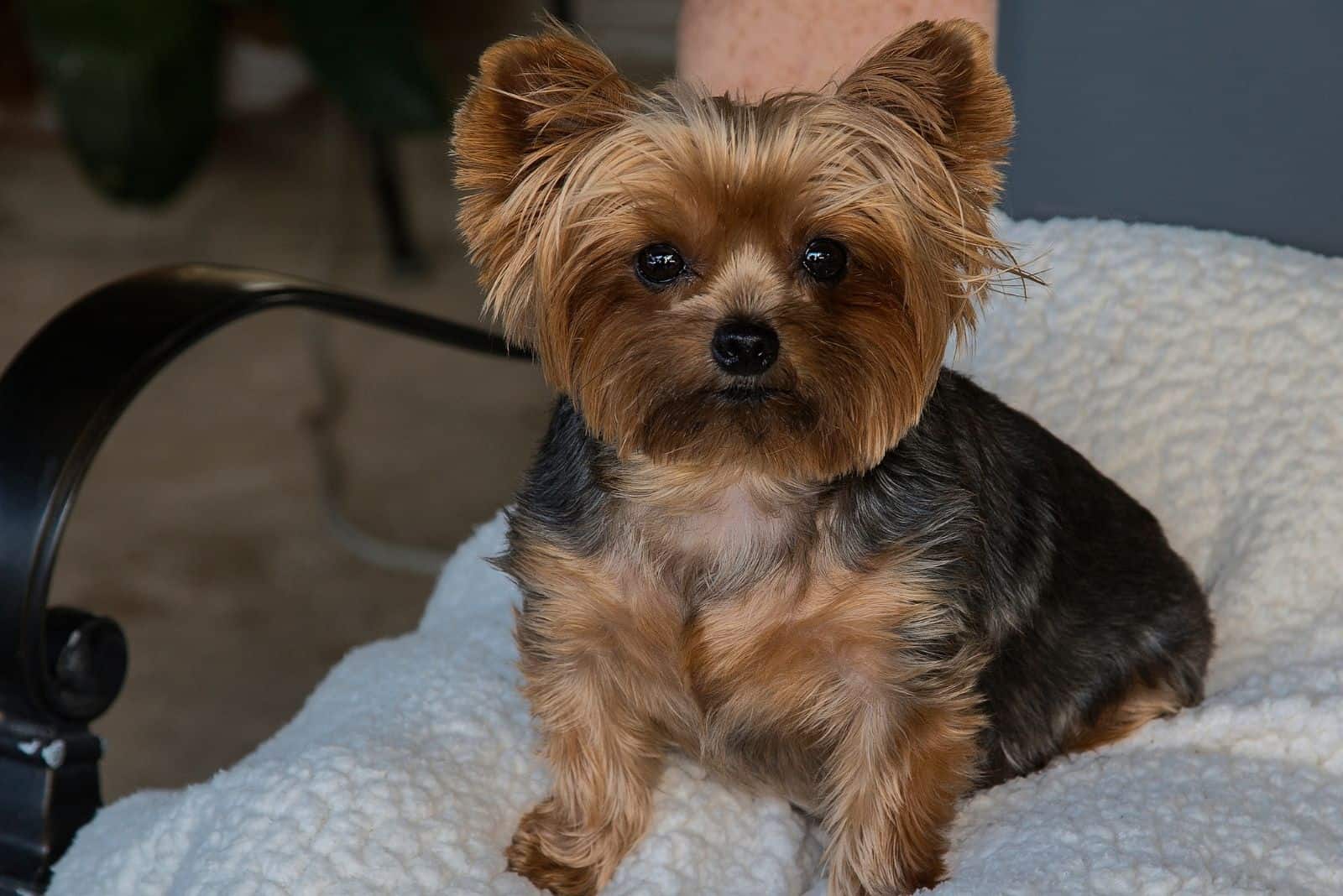
There are not many people who don’t know what Yorkies look like.
After all, they are one of the most distinctive dog breeds all thanks to their tiny size and long and silky hair. That’s right, Yorkies have no fur!
At birth, these teddy bear puppies usually weigh around 2.5 ounces and have a soft, short coat in tan or brown colors.
Yorkies get into adulthood when they reach two years of age. This change is very noticeable thanks to the distinctive color changes.
Yorkies get lighter as they grow older. The blue Yorkie can become silver-blue or dark steel blue while the tan will change into a gold color.
Also, females become lighter colored than males when in heat, then they switch back to dark colors when it’s over.
Teacup Yorkies are just a part of the small breed named the Yorkshire Terrier. They’re smaller than the breed specification.
Some teacups are simply born tiny due to a birth defect while others are intentionally bred for small size.
The teacup version of a Yorkshire Terrier is around four pounds lighter than the average one. Learn more about this dog’s size in our Yorkie growth chart.
Unfortunately, teacup Yorkies are prone to several severe health problems, including hypoglycemia (low glucose level).
They’re not as healthy as standard Yorkies, and they don’t live as long as the other Yorkies do. They are also more fragile than any other dog breed.
Besides the health issues and size matters, the coat style is also a feature you shouldn’t miss.
Outside of breed standards, there are two basic looks for a Yorkie. The classic long hair or show cut and the puppy cut or pet cut – the short option is the trendy style.
Usually, Yorkie owners have their pups trimmed with long hair on their head, often pulled back in a bow or a top knot.
The other owners pay lots of time and effort to take care of the Yorkie’s silky hair and tangle-free hair. Some Yorkies even have long and flowing silky coats down to the floor!
Generally, teacup Yorkies never pass eight to nine inches in height; however, the weight is somewhat different.
Most Yorkies weigh four to six pounds, but there are some rare cases in which they reach 15 pounds!
Size is highly important, but a loving personality is even more important!
Why Teacup In The First Place?
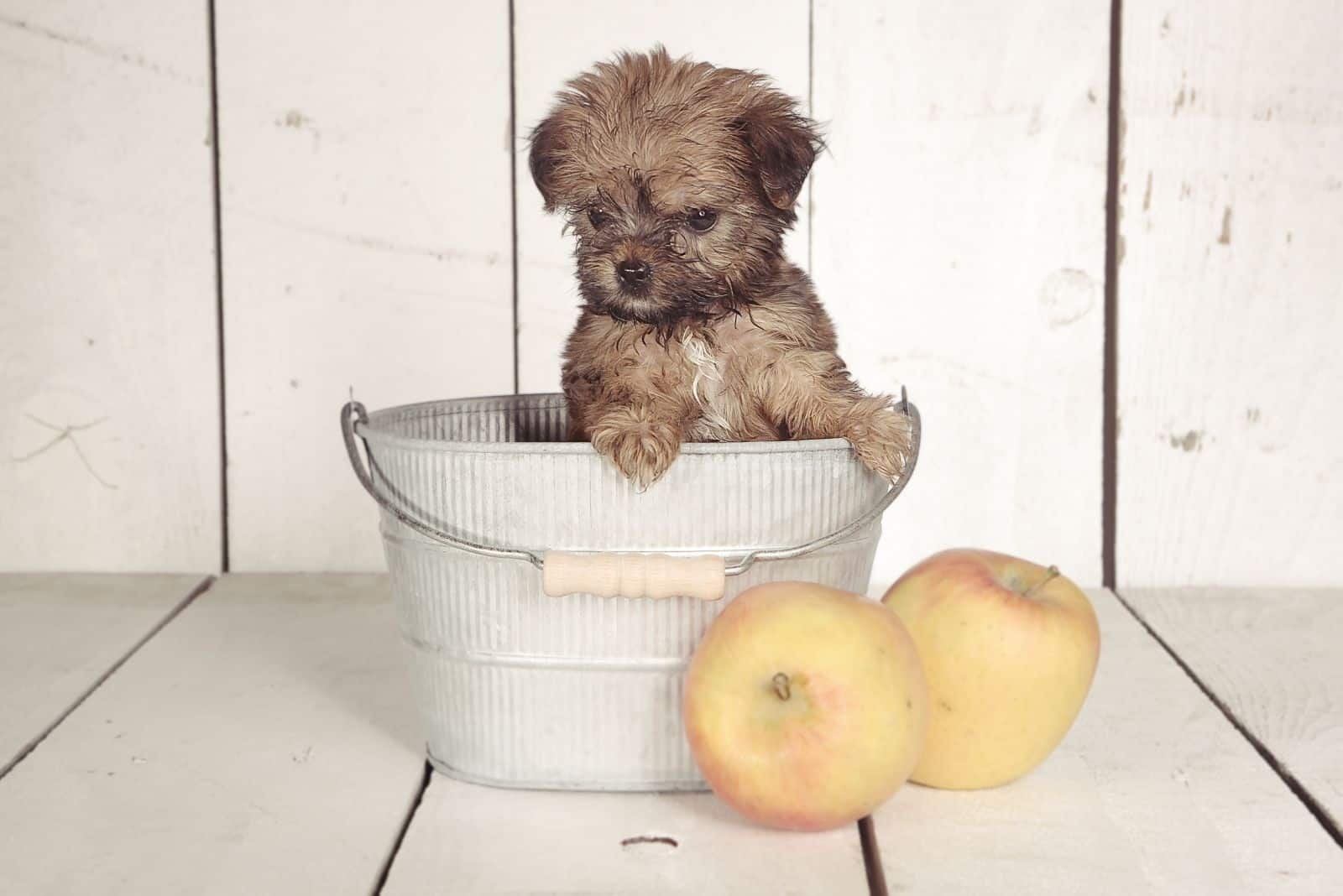
The answer is pretty obvious!
Some mini Yorkies are so tiny that they fit in a teacup. Fun, isn’t it?
The Teacup usually weighs between two and four pounds. So, no, the cups aren’t huge; the dogs are just teeny tiny.
Teacup Yorkies are not a recognized breed on their own. They’re simply a pedigree Yorkie bred to be smaller than a standard Yorkshire Terrier.
The Controversy Behind Teacup Yorkies
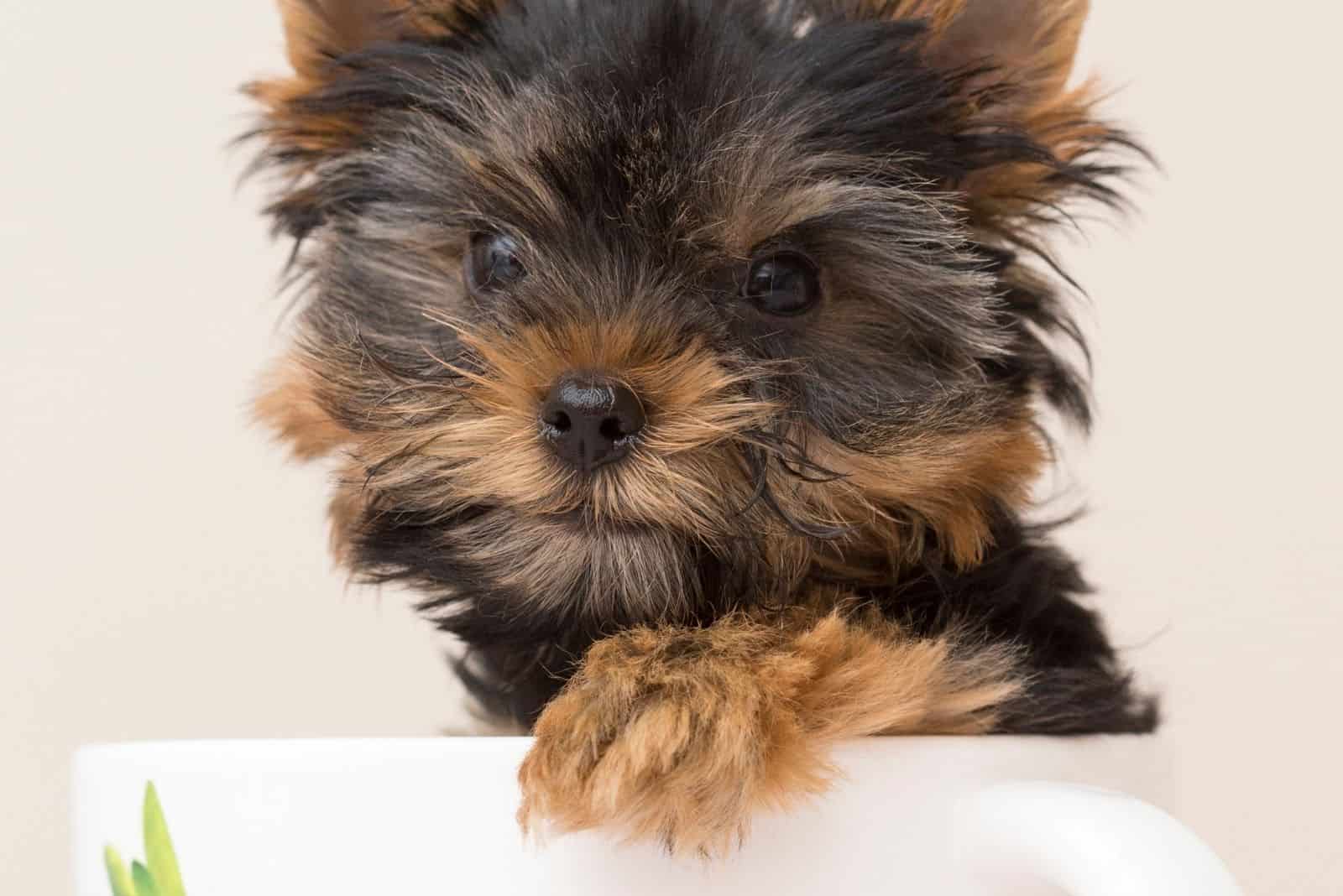
Teacup Yorkshire Terriers are not new or a separate dog breed. They’re as much Yorkshire terriers as any other size of a Yorkie.
Teacup Yorkies are not the only pups able to fit in a teacup. Other toy breeds also have teacup versions!
Even though they’re super cute, there’s a lot of controversy behind breeding the teacup.
Miniaturizing any dog breed leads to a bunch of health risks that no one ever should face.
Many fake breeders breed only for the sake of money… They don’t think of the pup’s health at all!
If you’re thinking of getting a teacup version of the Yorkie, you need to snoop around for a real teacup breeder… Someone who puts health first and money last.
The Magic Of Mini: Why Is Miniature So Popular?
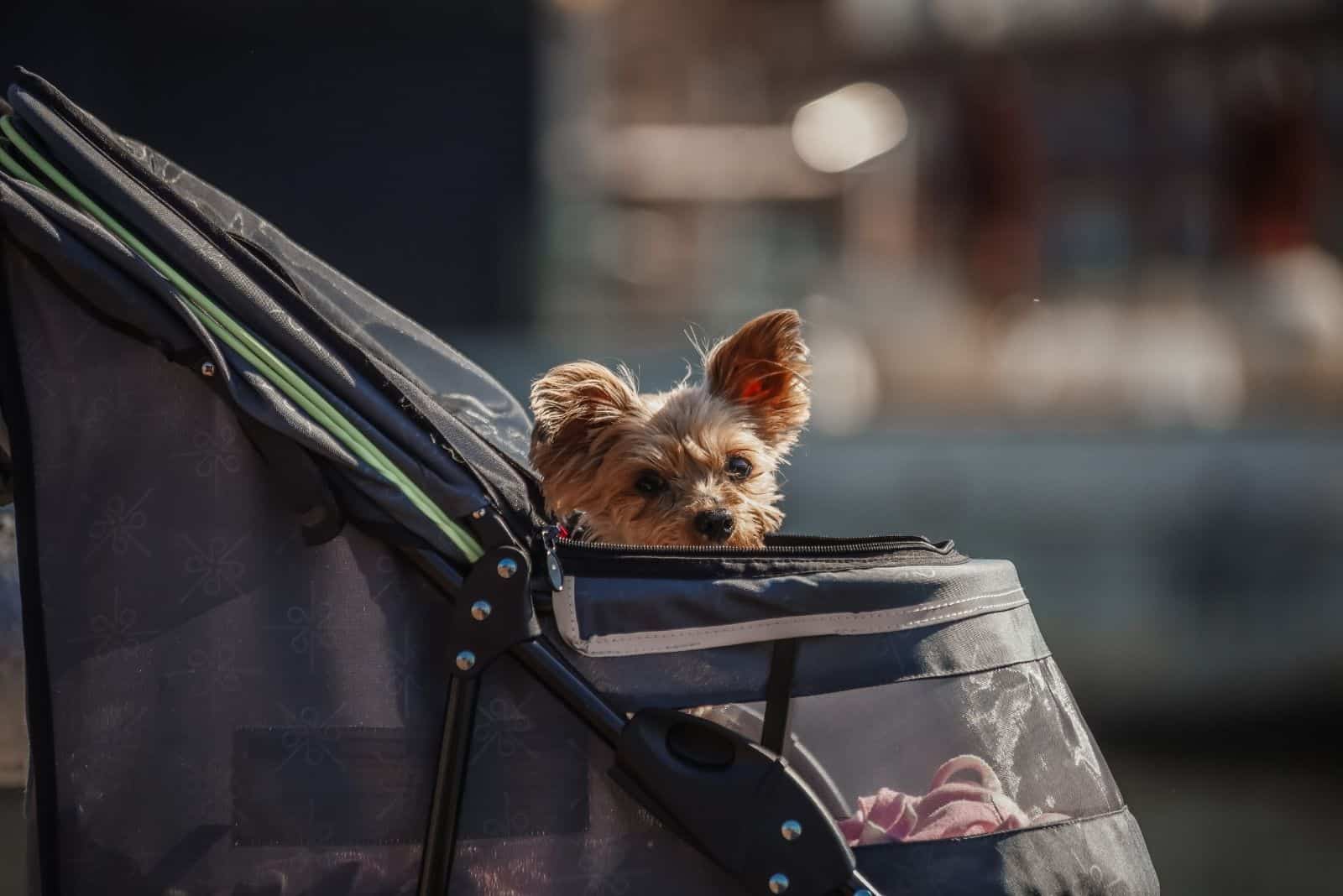
Why is everything tiny so popular? Why do we love mini-sized pups more than regular pooches?
Well, to start off, we can think of a few reasons why…
The biggest reason behind this miniaturization is the basic human need to take care of a baby animal.
The other one is the retention of baby-like traits in an adult animal. This is called neoteny, meaning youth extended.
The math is pretty simple: tiny, puppy-like adult pooches over any big dog!
Many people go head over heels when they see a tiny puppy with a big head and a fragile body. It’s only natural to feel the urge to protect and take care of it.
This drive to protect baby-like creatures is in our DNA.
The questions many people might ask are: Is miniaturization harmful? Is making tiny breeds even tinier allowed?
The fact is that tiny breeds are the most appealing ones to the eyes.
We’ll leave it up to you and your ethics to answer whether you think miniaturizing is ethical.
Micro Teacup Yorkie: It Gets Even Smaller!
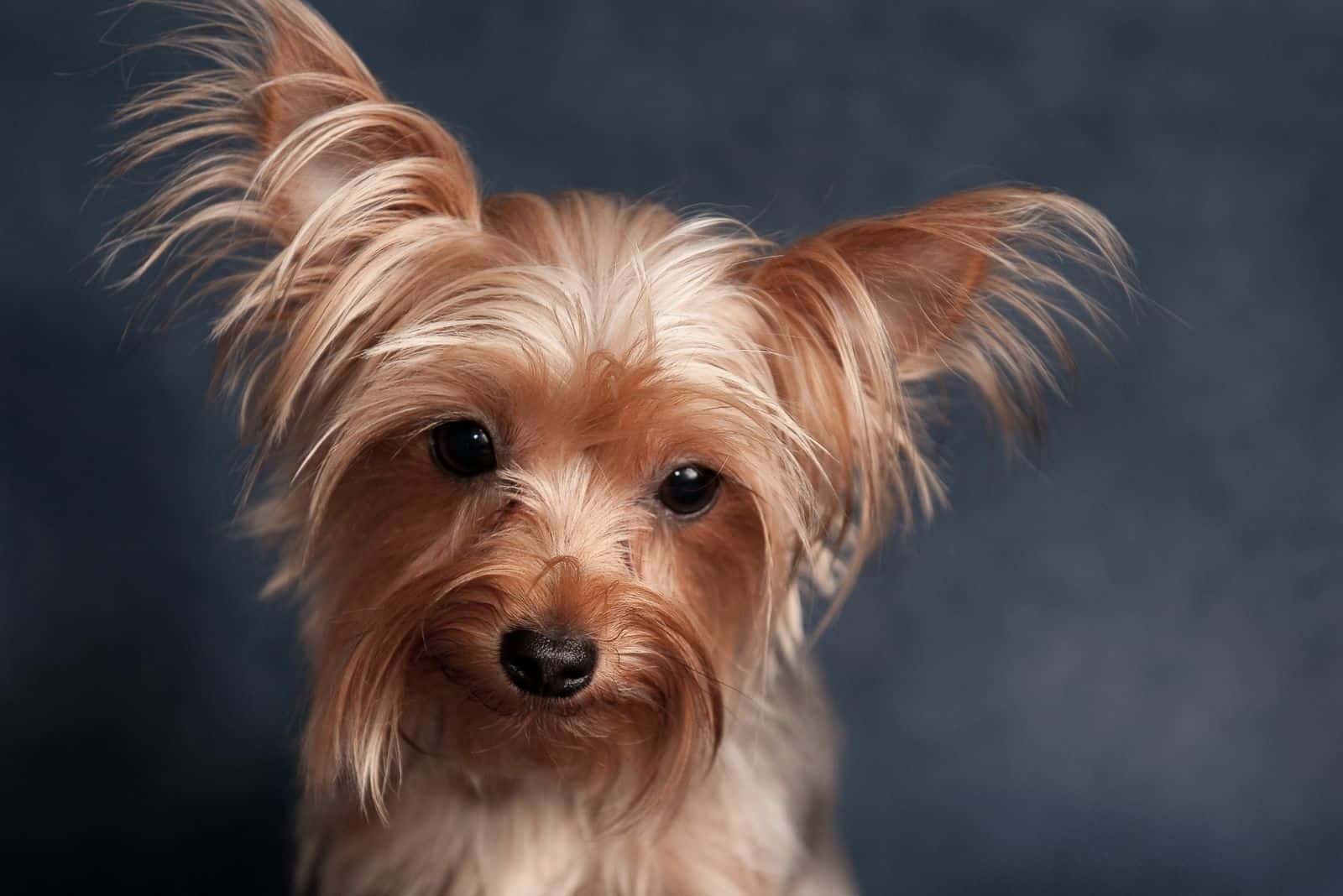
No, we’re not kidding. There is even a smaller teacup size!
You can find micro teacup Yorkies for sale online. This could only mean that these dogs are the tiniest of them all.
Since there’s no breed standard, dog breeders (the unreputable ones) create standards of their own.
Questions of common sense, ethics, and health issues are on fire here. An association, like the American Kennel Club (AKC), should absolutely take this matter into consideration.
Benefits: Why Owning A Teacup Yorkie Is A Great Idea
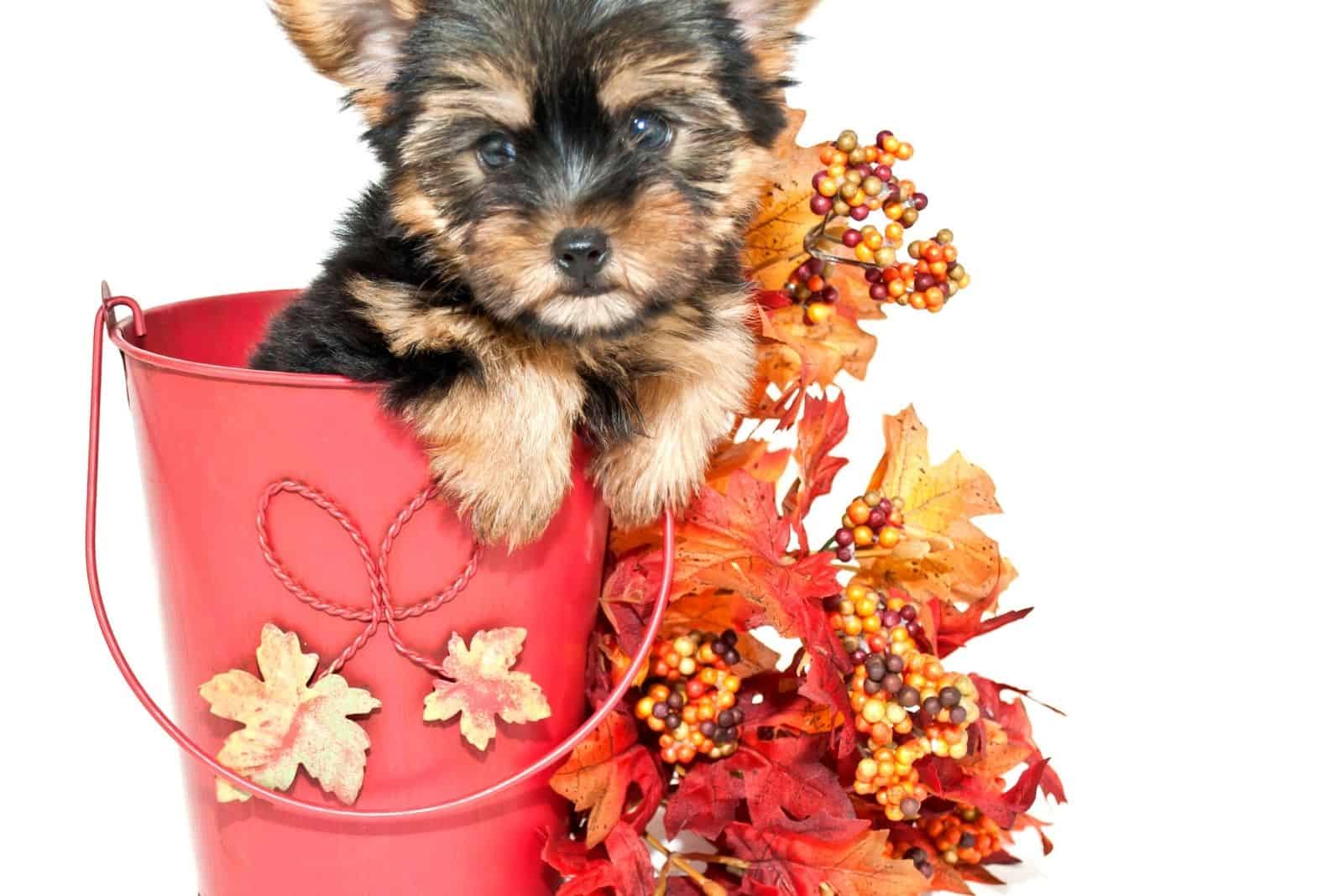
We’ve talked about many downsides of owning a teacup Yorkie; now we’re going to talk about the benefits this dog breed has.
All dogs can be clumsy, messy, and hard to train. Life is fast, so no one has time to train a dog as much as he needs.
This is the perfect doggo for all you busy bees who don’t have the time to commit to the training.
Little dogs are easily portable and manageable. They don’t take up hardly any space, and they don’t shed as much as you’d assume. In fact, teacup Yorkie is a hypoallergenic dog, which is another huge plus!
Teacup Yorkies are quite convenient. Bring one in your purse, have them sit in your lap… you can take a teacup anywhere with you!
The fabulous personality and tiny size won’t fade.
It’s a dog that follows you anywhere you go!
Health Issues Teacup Yorkies Face

The following list might be devastating for you, but you need to know all the general health issues of a teacup Yorkie.
They include:
• heart problems
• liver problems
• brain problems
• low blood sugar
• bone problems
• psychological problems
A teacup pup’s heart is more prone to defects and diseases than any other dog’s heart.
Small organs and small body parts sometimes don’t work well, and the heart and liver are the organs that the Yorkie has the most problems with.
When considering these health risks, we can assume that the Yorkie might live shorter than the standard Yorkie.
The lifespan of a Yorkshire Terrier is 11 to 15 years while teacups can stay with us only for some short seven to nine years.
It’s not a life expectancy everyone hopes for…
Other than heart and liver conditions, teacup Yorkies also have problems with bones. This dog breed can suffer from severe brain inflammation and a buildup of fluid inside the skull.
Teacup dog skulls may have soft spots in them. It’s almost like the fontanelle in a human baby.
But, unlike a baby, the soft spot on a tiny dog’s head never closes, meaning permanent injury and brain damage are possible if the soft spot gets hurt.
In general, teacup Yorkies have fragile, little bones that are prone to injuries, along with having terrible issues with hip joints.
Size apparently does matter, and Yorkies are fully aware of it. Numerous cases show that the mental or psychological health in dogs is linked to their size.
Being a small dog in a big, bad world makes many dogs stressed. No wonder tiny dogs have to go through so many emotional rollercoasters; separation anxiety being the biggest ride of the day.
Taking Care Of Your Teacup Pup
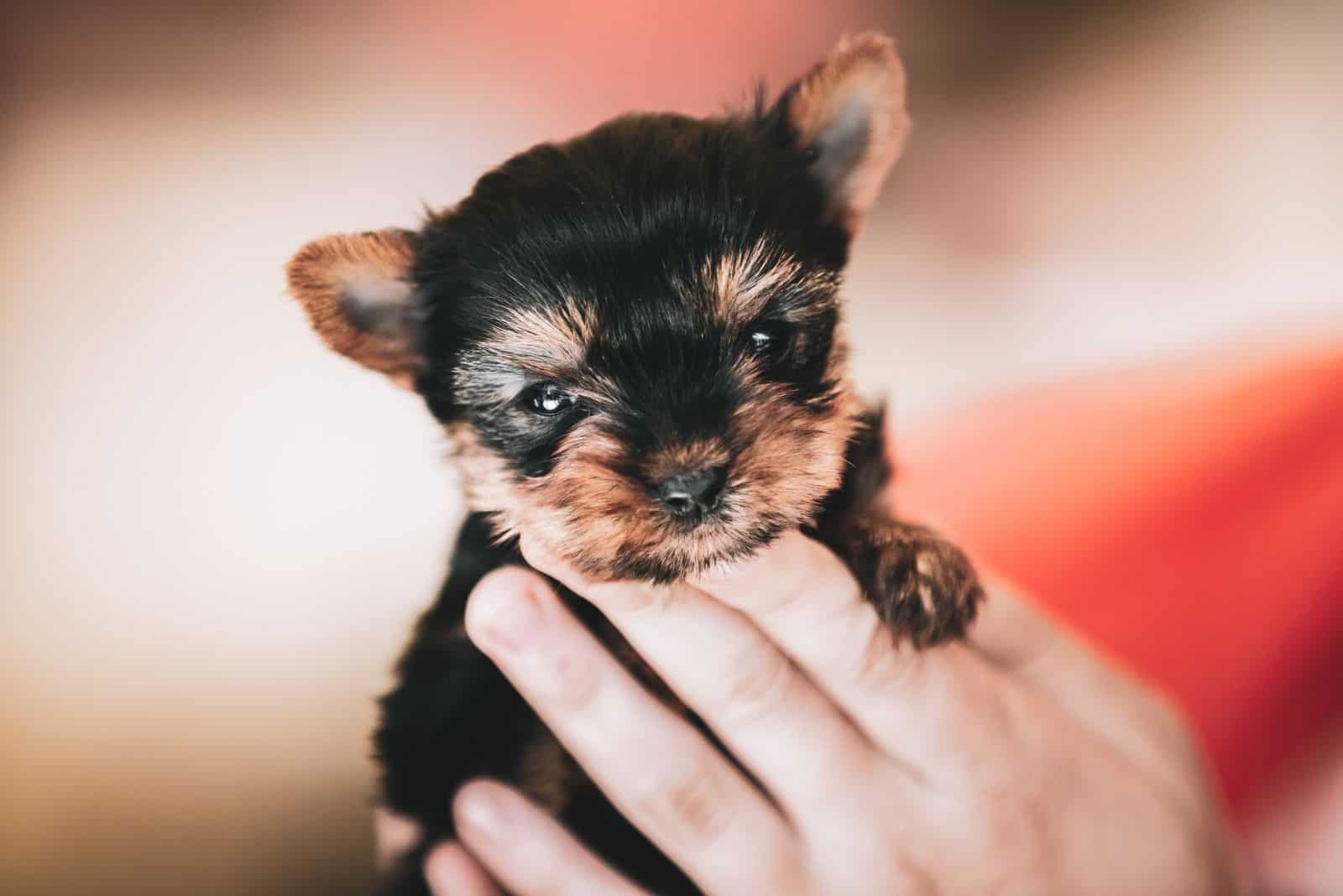
Before getting any dog breed, always check out the caring requirements and see if you can meet them.
A teacup Yorkie is no joke. Taking care of these tiny dogs involves spending lots of time together and maybe even sacrificing some old habits.
A Teacup Yorkie is tiny. Really, teensy tiny! He’s got fragile puppy bones, so you better not step on it by accident.
Also, extensive jumping up and down with kids or being left alone should be avoided to ensure the bones will stay intact. Playtime shouldn’t be rough, ever!
The sooner you face the fact that your tiny teacup pup is impossible to train, the better. House training or potty training is the most difficult obstacle these pups need to face because of their small bladders.
Incontinence is common in all teacup dogs.
What is important is to start at an early age and try as much as you can to potty train the teacup Yorkie. Maybe it will work out eventually.
What Does A Teacup Yorkie Eat?
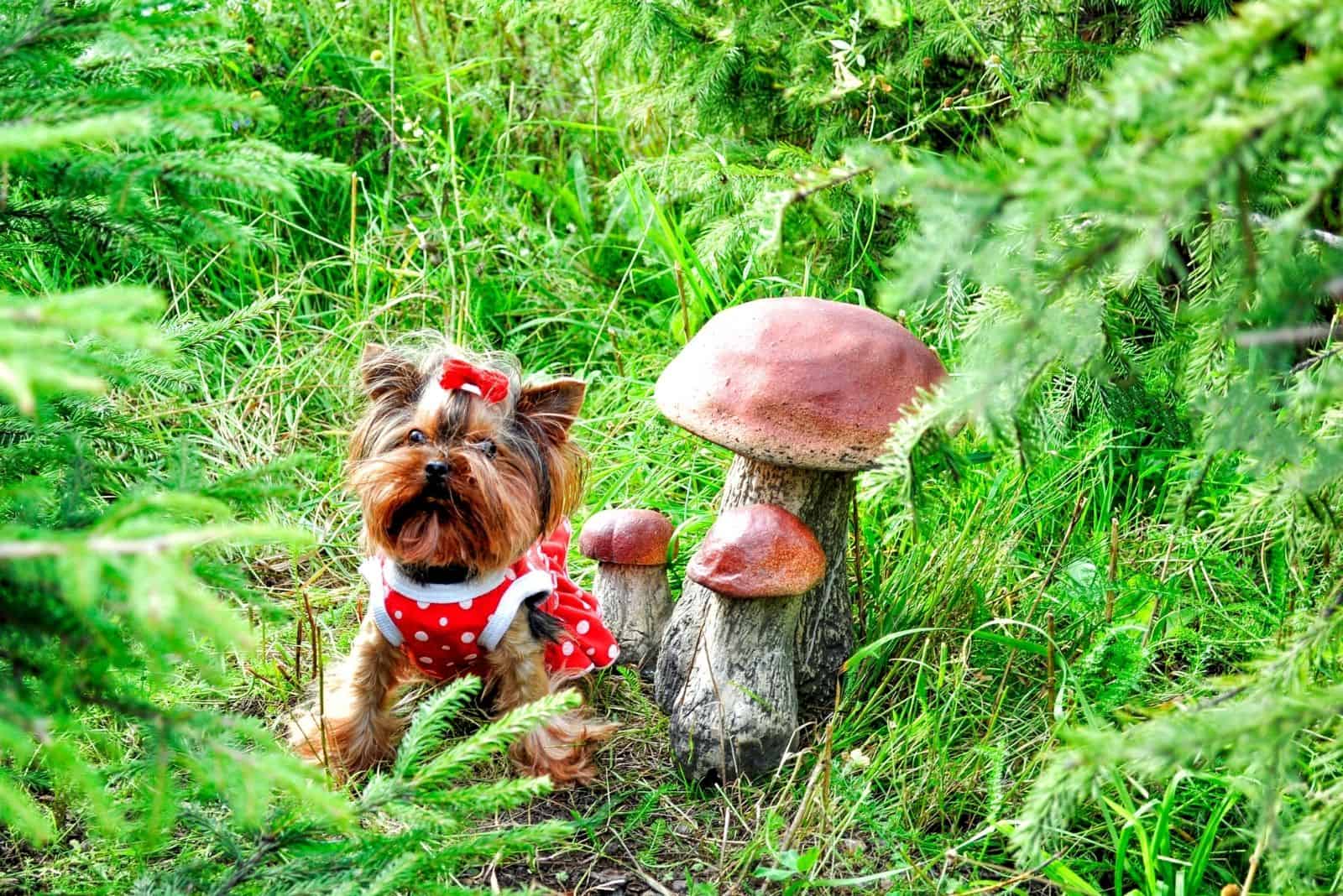
Teacup Yorkie pups should eat once every three to four hours. Still, we’re not talking about huge portions. They’re tiny pups, so they need tiny portions.
Night feeding isn’t necessary. Who on Earth wakes up their pup in the middle of the night to eat? Just make sure your doggo gets enough food before bed. Also, feeding them first thing in the morning is required.
A tiny Yorkie should never skip a meal. Lack of appetite is serious with these pups, so as soon as you notice the first signs, head out to see the vet.
Also, alarming signs are white specks in your dog’s poop and extensive defecation.
Yorkshire Terriers suffer from low blood sugar levels that can be fatal if not treated in time.
Tiny dogs like this breed need at least forty calories per pound of their body weight, meaning you need to find dog food formulated for small dog breeds.
It’s the only way your Yorkie will get the necessary nutrients.
In addition, Yorkies have sensitive stomachs and are prone to liver shunts. Two more reasons why appropriate food is a must! Forget about food leftovers and unhealthy human food like salsa and tortillas. But if you really want to, you can feed your Yorkie small bits of artichokes, basil, cilantro, and other healthy fruits and vegetables.
Dog Breeders And Where To Buy This Tiny Breed
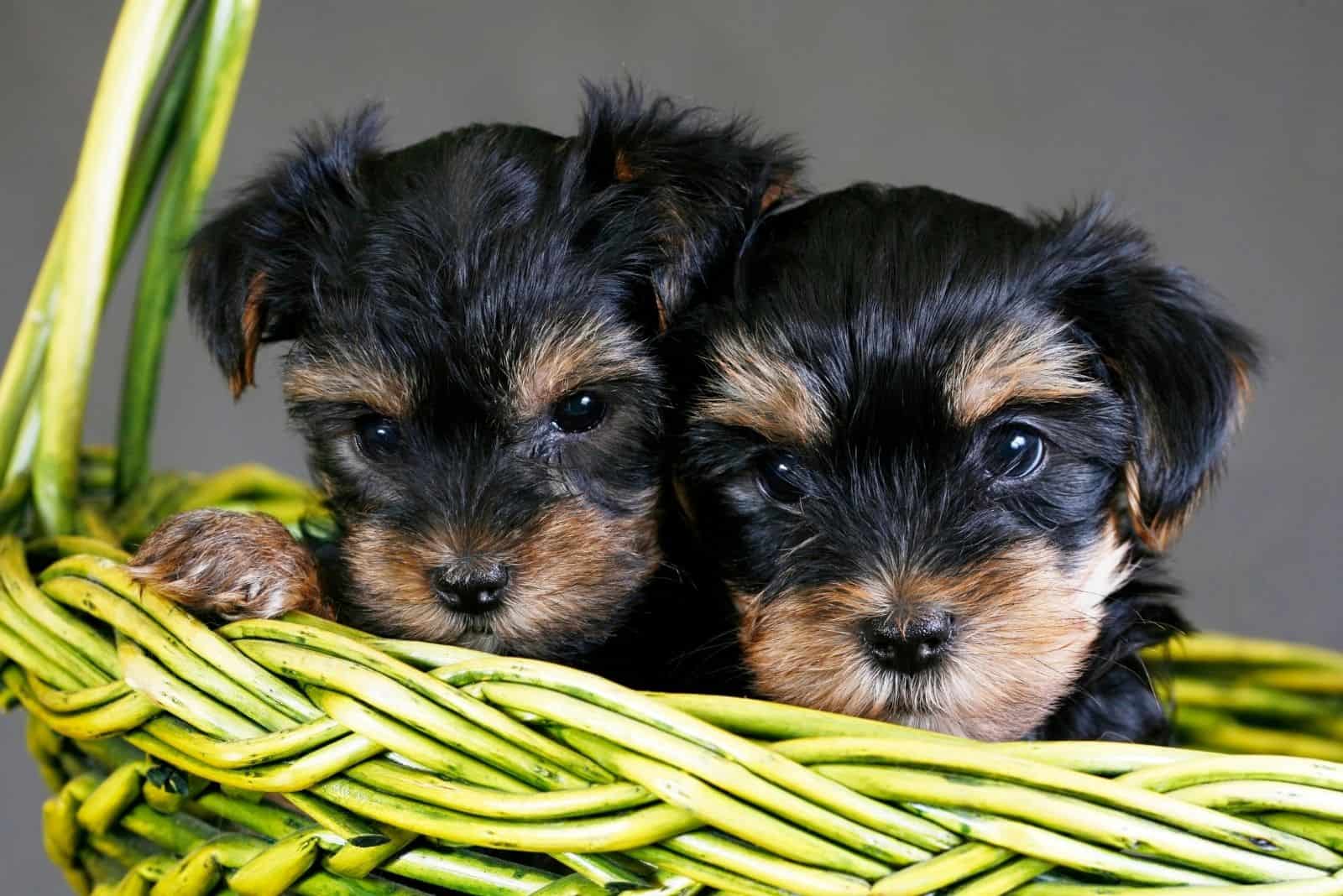
As mentioned before, poor breeding processes were the biggest factor in teacup dog health issues. Why?
The answer is quite logical: In order to get a tiny dog, you need to breed tiny dogs. This meant breeding many litter runts in order to achieve the perfect small size. (and Yorkies don’t give birth too many puppies, to begin with)
Dog breeders were irresponsible. They bred dogs according to their size, not their good health status, which only made trouble in upcoming generations.
What made these dog breeders keep on going with poor breeding is money, of course!
This brings us to the money game.
Are you aware of how much teacup Yorkies cost?
Are Teacups More Expensive?
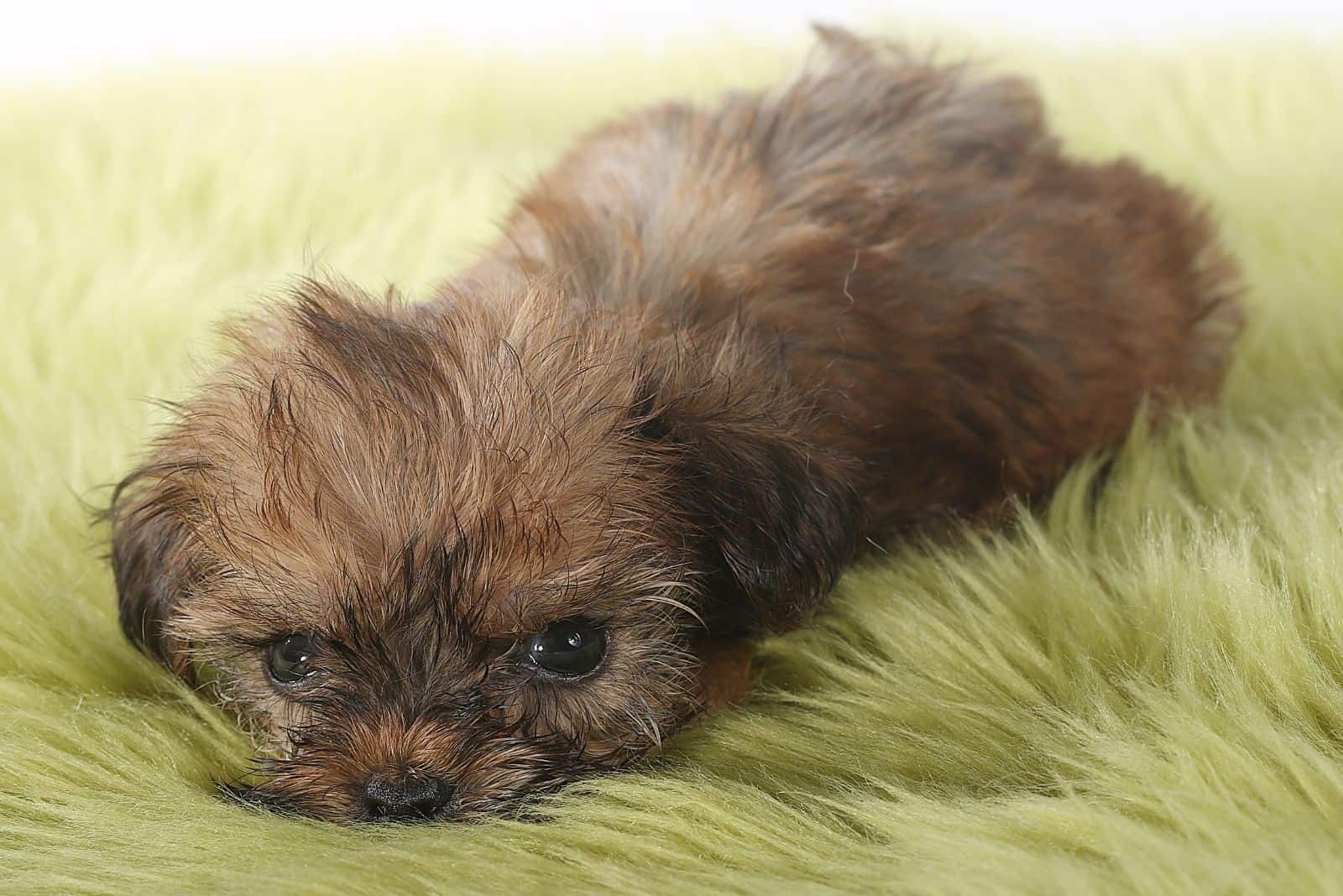
To spill the tea, teacups are more expensive than standard Yorkshire Terriers.
Reputable breeders will never compromise the health of their Yorkies just to gain more money because of the tiny dog craze that has been going on for years now.
The demand for teacups is pretty high.
This means more money is in the game, and teacup breeders can earn a lot from their puppies by charging a lot of money for their pups.
The prices for teacup Yorkies start from $2,000 and up, not to mention the vet bills!
Still, you can save some money if you know how to spot a healthy puppy in the litter.
Here’s how!
How To Choose A Healthy Teacup Yorkie

Many listed problems happen to all teacup breeds, and buying such a small puppy brings along many risks.
It is truly challenging to find a completely healthy Teacup Yorkie. Some even might say it’s impossible!
When buying, always follow the rule of not buying the smallest puppy of them all before it gets old enough. Reputable breeders don’t let puppies go before they cross the 12th-week milestone.
The ugly truth is, there are no 100% healthy teacups. All dogs are prone to some health conditions, and you need to accept that your puppy may be a less healthy one because of its unique tiny size.
If you’re willing to look past the health risks and you still want a teacup Yorkie puppy, then you should check out rescue centers and shelters. Adopting is always a better solution!
In the end…
Teacup Yorkies are adorable, teeny-tiny pups that will steal your heart forever. They’ll also break your heart once you get to know all of their health conditions.
One look at their cute little face and you’ll be sold for good.
The only question is: are you ready to look past the health issues and give this puppy the special care it needs?
